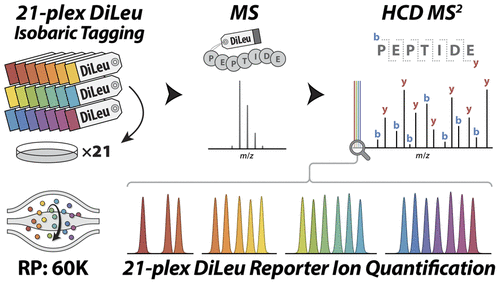Recent publication highlights phosphoproteome analysis using FAIMS
Mass spectrometry is the premier tool for identifying and quantifying protein phosphorylation. Analysis of phosphopeptides requires enrichment, and even after that step, the samples remain highly complex and exhibit broad dynamic range of abundance. In a recent publication, Muehlbauer et al. describe a method for integrating a high-field asymmetric waveform ion mobility spectrometry (FAIMS) device into the workflow. The data collected with FAIMS yielded a 26% increase in total reproducible measurements, leading researchers to conclude that the new FAIMS technology is a valuable addition to any phosphoproteomic workflow, with greater benefits emerging from longer analyses and higher amounts of material.
Read the publication here: Global Phosphoproteome Analysis Using High-Field Asymmetric Waveform Ion Mobility Spectrometry on a Hybrid Orbitrap Mass Spectrometer

